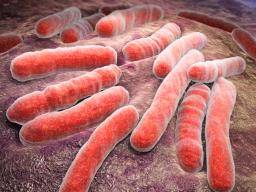Diseases 101: Tuberculosis
Diseases 101: Tuberculosis
Tuberculosis is an infectious disease which mainly affects lungs. Along with lungs, it also affects other parts of the body. About 33% of the population of earth is thought to be infected with TB. New infections occur in about 1% of the population each year. In 2016, there were 10 million people infected with the disease, 1.3% were dead. This makes it the number one cause of death from an infectious disease. The problem is more severe in developing countries.

Causative organism:
Small bacteria and virus which cause the diseases are called the causative organism. The causative organisms of Tuberculosis is given below.
i. Microbacterium Tuberculosis: It causes pulmonary(related to lungs) tuberculosis. It affects all parts of the body except hair and nail.
ii. Mycobacterium bovis: It causes abdominal tuberculosis.
iii. Mycobacterium avium: It causes tuberculosis in AIDS patients.
Incubation period:
The time between catching the infection and appearance of the first symptom is called incubation period. For tuberculosis, it is about 3 weeks to 3 months.
Clinical features:
i. Fever
ii. Breathlessness
iii. Chest pain
iv. Blood in sputum. Sputum is the mixture of saliva and mucus which comes out from the mouth during infection.
v. Chronic weight loss
vi. Night sweat
Diagnosis:
i. Ziehl–Neelsen (ZN) staining:
It is bacterial stain which is used to identify Mycobacterium tuberculosis.
ii. Sputum test:
3 consecutive morning samples of sputum helps to identify bacteria.
iii. Chest X-ray
iv. Mantoux test
About 0.1 ml of tuberculin is injected in between layer of dermis. After 48 to 72 hours, it is checked again. The person with bacteria shows immune response in skin.
v. PCR(Polymersa Chain Reaction)
Treatment:
i. Pyrazinamide: It kills or stops the growth of bacteria.
Side effects: nausea, vomiting, loss of appetite, fatigue, upset stomach.
ii. Rifampicin: It is also bactericidal.
Side effects: red color secretion of saliva, sweat and urine.
iii. Isoniazid: It is bactericidal. It prevents the growth of bacteria.
Side effects: It causes peripheral neuritis
iv. Streptomycin: It kills the bacteria.
Side effects: It causes ototoxicity(ear poisioning) and nephrotoxicity(toxicity in kidney).
v. Ethambutol: It is bacteriostartic. It inhibits the growth of bacteria.
Side effects: it causes eye toxicity
Reference:
Text:
https://www.medicalnewstoday.com/articles/8856.php
http://www.who.int/mediacentre/factsheets/fs104/en/
https://medlineplus.gov/tuberculosis.html
Photo:
In agreement.
TB is as deadly as we can think of.
The pulmonary system needs protection
yeah.
Thank you for commenting.
Followed.
But But on upcoming days ,With the development of AI and Machine learning,study of such disease will lead immidiate cure and lesser chancer of getting caught from the disease
Unfortunately 'imminent cure' for TB is hard. The organism itself doesn't really attack our body! What happens is that our body attacks the little TB bugs, wrapping them up in cells. But TB can't be digested. So little balls of immune cells just keep building up and eventually it's our own immune system which is compromising our lungs!